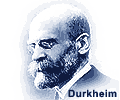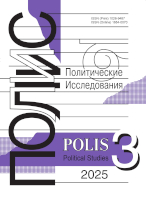Neither a Friend. Not a Foe:
Donald Trump in the Russian Media
Kazun A.D.,
Junior Researcher, Laboratory for Studies in Economic Sociology; Lecturer, Department of Economic Sociology, National Research University Higher School of Economics, adkazun@hse.ru
elibrary_id: 822971 | ORCID: 0000-0002-9633-2776 | RESEARCHER_ID: K-6835-2015
Kazun A.P.,
Researcher, International Center for the Study of Institutions and Development, Senior Lecturer, Department of Applied Economics, National Research University Higher School of Economics, kazun.anton@gmail.com
elibrary_id: 749056 |
DOI: 10.17976/jpps/2019.01.07
Kazun A.D., Kazun A.P. Neither a Friend. Not a Foe: Donald Trump in the Russian Media. – Polis. Political Studies. 2019. No. 1. https://doi.org/10.17976/jpps/2019.01.07
This article provides the first systematic analysis of the Russian media coverage of Trump’s activities during the electoral campaign and within first seven months of his presidential term. We conduct a quantitative analysis of the publications about Donald Trump in 500 Russian magazines and 250 largest federal newspapers. The database “Medialogy” served as a source of data for sentiment analysis of news reports about the American president. On its basis, the conclusion is drawn that the image of Trump was not unambiguously positive, as some foreign studies have claimed. Based on the theory of the network agenda setting we analyzed the context in which Donald Trump was mentioned one month before the election, a month after the elections and in June 2017, just before his meeting with Vladimir Putin. Based on the analysis of network agendas in the Russian federal press, it can be concluded that Trump was portrayed by the Russian media not as Russia’s favorite candidate for president, but as Hillary Clinton’s opponent and a critic of U.S. recent policies. In this context, its likely loss would allow the Russian media to strengthen the negative impression of Russians from U.S. elections. However, after the election results were announced, the Russian media changed tactics and began to write about Trump as a friend of Russia, since there was hope that the new president would lift political and economic sanctions. Trump’s policy has not lived up to the expectations of Russians and since the beginning of 2017 publications about him were mostly negative. Finally, Trump’s positive image collapsed after the start of U.S. military operations in Syria and the imposition of new sanctions against Russia.
References
Aaldering L., Vliegenthart R. 2016. Political Leaders and the Media. Can We Measure Political Leadership Images in Newspapers Using Computer-Assisted Content Analysis? – Quality & Quantity. Vol. 50. No. 5. P. 1871-1905. https://doi.org/10.1007/s11135-015-0242-9
Balmas M., Sheafer T. 2013. Leaders First, Countries After: Mediated Political Personalization in the International Arena. – Journal of Communication. Vol. 63. No. 3. P. 454-475. https://doi.org/10.1111/jcom.12027
Bean C. 1993. The Electoral Influence of Party Leader Images in Australia and New Zealand. – Comparative Political Studies. Vol. 26. No. 1. P. 111-132. https://doi.org/10.1177/0010414093026001005
Blondheim M., Segev E., Cabrera M.-A. 2015. The Prominence of Weak Economies: Factors and Trends in Global News Coverage of Economic Crisis, 2009-2012. – International Journal of Communication. No. 9. Р. 46-65.
Chang T.-K., Shoemaker P.J., Brendlinger N. 1987. Determinants of International News Coverage in the U.S. Media. – Communication Research. Vol 14. No. 4. P. 396-414. https://doi.org/10.1177/009365087014004002
Entman R.M. 2008. Theorizing Mediated Public Diplomacy: The U.S. Case. – The International Journal of Press/Politics. Vol. 13. No. 2. P. 87-102. https://doi.org/10.1177/1940161208314657
Gehlbach S. 2010. Reflections on Putin and the Media. – Post-Soviet Affairs. Vol. 26. No. 1. P. 77-87. https://doi.org/10.2747/1060-586X.26.1.77
Gerber T. 2015. Foreign Policy and the United States in Russian Public Opinion. – Problems of Post-Communism. Vol. 62. No. 2. P. 98-111. https://doi.org/10.1080/10758216.2015.1010909
Guo L. 2012. The Application of Social Network Analysis in Agenda Setting Research: A Methodological Exploration. – Journal of Broadcasting & Electronic Media. Vol. 56. No. 4. P. 616-631. https://doi.org/10.1080/08838151.2012.732148
Guo L., Chen Y.-N., Vu H., Wang Q., Aksamit R., Guzek D., McCombs M. 2015. Coverage of the Iraq War in the United States, Mainland China, Taiwan and Poland. – Journalism Studies. Vol. 16. No. 3. P. 343-362. https://doi.org/10.1080/1461670X.2014.885198
Guo L., Vargo C. 2015. The Power of Message Networks: A Big-Data Analysis of the Network Agenda Setting Model and Issue Ownership. – Mass Communication and Society. Vol. 18. No. 5. P. 557-576. https://doi.org/10.1080/15205436.2015.1045300
Hart R. 2017. The People’s Voice During the 2016 Presidential Campaign. – American Behavioral Scientist. Vol. 61. No. 6. P. 566-583. https://doi.org/10.1177/0002764217707622
Horvit B., Gade P., Lance E. 2013. News Wire Greatest Predictor of Papers’ International News. – Newspaper Research Journal. Vol. 34. No. 1. P. 89-103. https://doi.org/10.1177/073953291303400108
Kazun A.D., Kazun A.P. 2017. Coverage of Three Tragedies in the Russian Media: Application of the Network Agenda Model. – NRU Higher School of Economics. Series PS “Political Science”. No. WP BRP 48/PS/2017. 26 р. URL: https://wp.hse.ru/data/2017/08/11/1174375941/48PS2017.pdf (accessed 25.09.2018).
Kiousis S., Kim J., Ragas M., Wheat G., Kochhar S., Svensson E., Miles M. 2015. Exploring New Frontiers of Agenda Building During the 2012 US Presidential Election Pre-Convention Period. – Journalism Studies. Vol. 16. No. 3. P. 363-382. https://doi.org/10.1080/1461670X.2014.906930
Lawrence R., Boydstun A. 2017. What We Should Really Be Asking About Media Attention to Trump. – Political Communication. Vol. 34. No. 1. P. 150-153. https://doi.org/10.1080/10584609.2016.1262700
Lee S. 2007. International Public Relations as a Predictor of Prominence of US News Coverage. – Public Relations Review. Vol. 33. No. 2. P. 158-165. https://doi.org/10.1016/j.pubrev.2007.02.002
McCombs M. 2014. Setting the Agenda: Mass Media and Public Opinion. John Wiley & Sons. 208 р.
McCombs M., Graber D., Weaver D. 1981. Media Agenda-Setting in the Presidential Election. N.Y.: Praeger Scientific. 227 р.
McCombs M., Shaw D., Weaver D. 2014. New Directions in Agenda-Setting Theory and Research. – Mass Communication and Society. Vol. 17. No. 6. P. 781-802. https://doi.org/10.1080/15205436.2014.964871
McGregor S., Mourao R. 2017. Second Screening Donald Trump: Conditional Indirect Effects on Political Participation. – Journal of Broadcasting & Electronic Media. Vol. 61. No. 2. P. 264-290. https://doi.org/10.1080/08838151.2017.1309418
McManus J. 1994. Market-Driven Journalism: Let the Citizen Beware? CA: Sage Publications. 260 р.
Rosengren K. 1974. International News: Methods, Data and Theory. – Journal of Peace Research. Vol. 11. No. 2. P. 145-156.
Segev E. 2015. Visible and Invisible Countries: News Flow Theory Revised. – Journalism. Vol. 16. No. 3. P. 412-428. https://doi.org/10.1177/1464884914521579
Sheafer T. 2001. Charismatic Skill and Media Legitimacy: An Actor-Centered Approach to Understanding the Political Communication Competition. – Communication Research. Vol. 28. No. 6. P. 711-736. https://doi.org/10.1177/009365001028006001
Shenhav S., Rahat G., Sheafer T. 2012. Testing the Language–Power Assumption of Critical Discourse Analysis: The Case of Israel’s Legislative Discourse. – Canadian Journal of Political Science. Vol. 45. No. 1. P. 207-222. https://doi.org/10.1017/S0008423911000965
Shoemaker P., Danielian L., Brendlinger N. 1991. Deviant Acts, Risky Business and U.S. Interests: The Newsworthiness of World Events. – Journalism Quarterly. Vol. 68. No. 4. P. 781-795.
Slutsky P., Gavra D. 2017. The Phenomenon of Trump’s Popularity in Russia: Media Analysis Perspective. – American Behavioral Scientist. Vol. 61. No. 3. P. 334-344. https://doi.org/10.1177/0002764217693281
Van Aelst P., Sheafer T., Stanyer J. 2012. The Personalization of Mediated Political Communication: A Review of Concepts, Operationalizations and Key Findings. – Journalism. Vol. 13. No. 2. P. 203-220. https://doi.org/10.1177/1464884911427802
Vu H., Guo L., McCombs M. 2014. Exploring ‘the World Outside and the Pictures in Our Heads’: A Network Agenda-Setting Study. – Journalism & Mass Communication Quarterly. Vol. 91. No. 4. P. 669-686. https://doi.org/10.1177/1077699014550090
Waismel-Manor I., Tsfati Y. 2011. Why Do Better-Looking Members of Congress Receive More Television Coverage? – Political Communication. Vol. 28. No. 4. P. 440-463. https://doi.org/10.1080/10584609.2011.617719
Wu H.D. 2007. A Brave New World for International News? Exploring the Determinants of the Coverage of Foreign News on US Websites. – International Communication Gazette. Vol. 69. No. 6. P. 539-551.
Arbatov A.G., Arbatova N.K. 2017. Trump Factor in Russia – US Relations. – Polis. Political Studies. No. 3. P. 160-178. (In Russ.) https://doi.org/10.17976/jpps/2017.03.11
Chernenko Y.A. 2017. Political Storytelling in the Context of the New Media Ecology. – Scientific Journal Mediaalmanah. No. 2. P. 12-19. (In Russ.)
D’yakova E.G. 2003. Mass Political Communication in the Agenda-Setting Theory: from Effect to Process. – Polis. Political Studies. No. 3. P. 109-119. (In Russ.) https://doi.org/10.17976/jpps/2003.03.11
Kazun A.D. 2017. Where Does Agenda Come from? The Role of the Media in Setting the Importance of Events. – The Russian Public Opinion Herald. Data. Analysis. Discussions. Vol. 124. No. 1-2. P. 182-189. (In Russ.)
Solovei V.D. 2017. Digital Mythology and Donald Trump Electoral Campaign. – Polis. Political Studies. No 5. P. 122-132. (In Russ.) https://doi.org/10.17976/jpps/2017.05.09
See also:
Solovey V.D.,
Digital Mythology and Donald Trump Electoral Campaign. – Polis. Political Studies. 2017. No5
Simonia N.A.,
Results of Presidential Elections in the United States and New Prospects for Formation of Multipolar World Order. – Polis. Political Studies. 2017. No2
Bezvikonnaya Ye.V.,
Systemico-Synergetic Model of a Political System. – Polis. Political Studies. 2009. No3
Bernays E.L.,
Manipulating public opinion: the why and the how. – Polis. Political Studies. 2012. No4
Shakleina T.A.,
Donald Trump and “New Populism” in America. – Polis. Political Studies. 2021. No5





.jpg)






 print
print
.jpg)
.jpg)